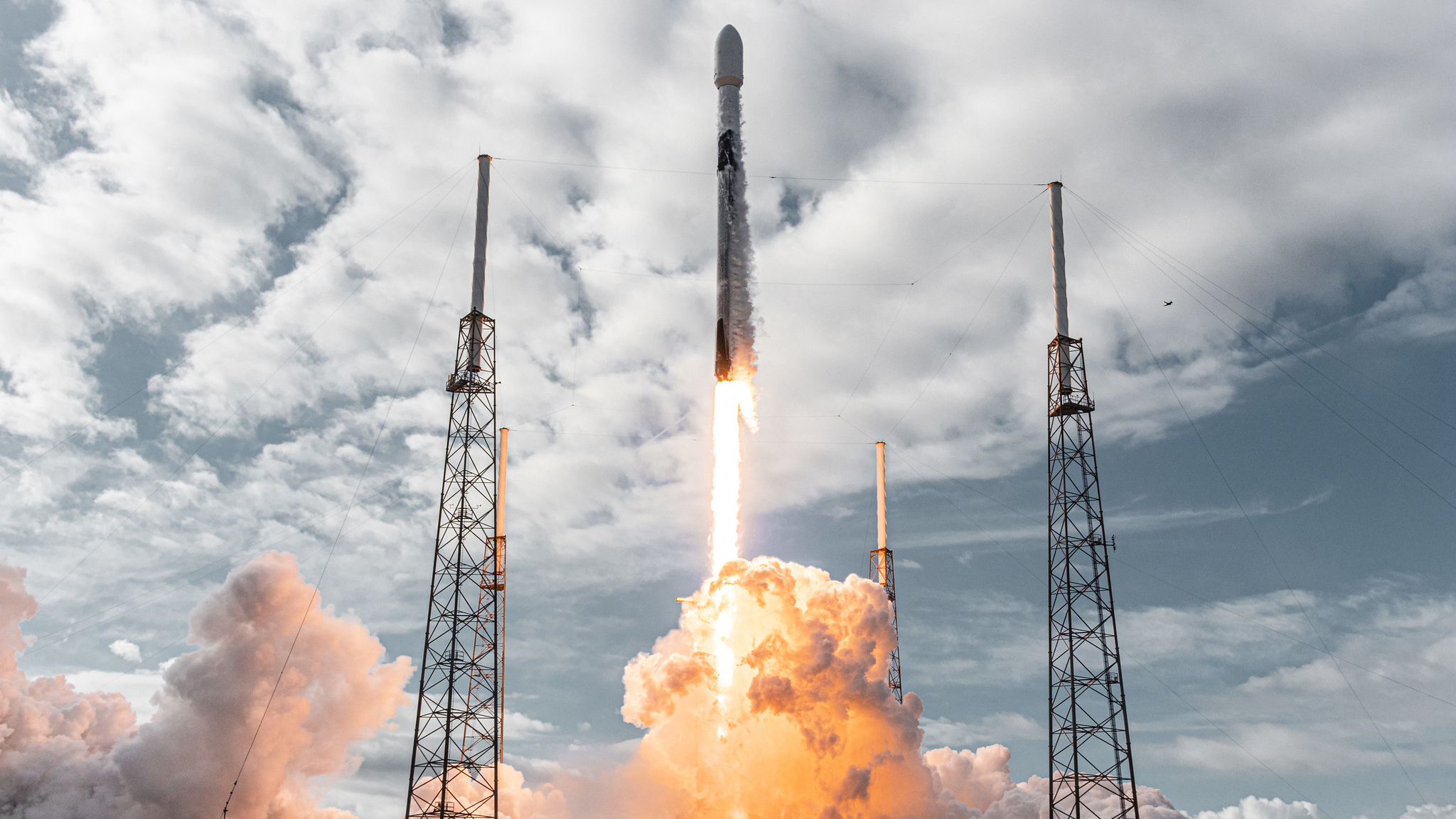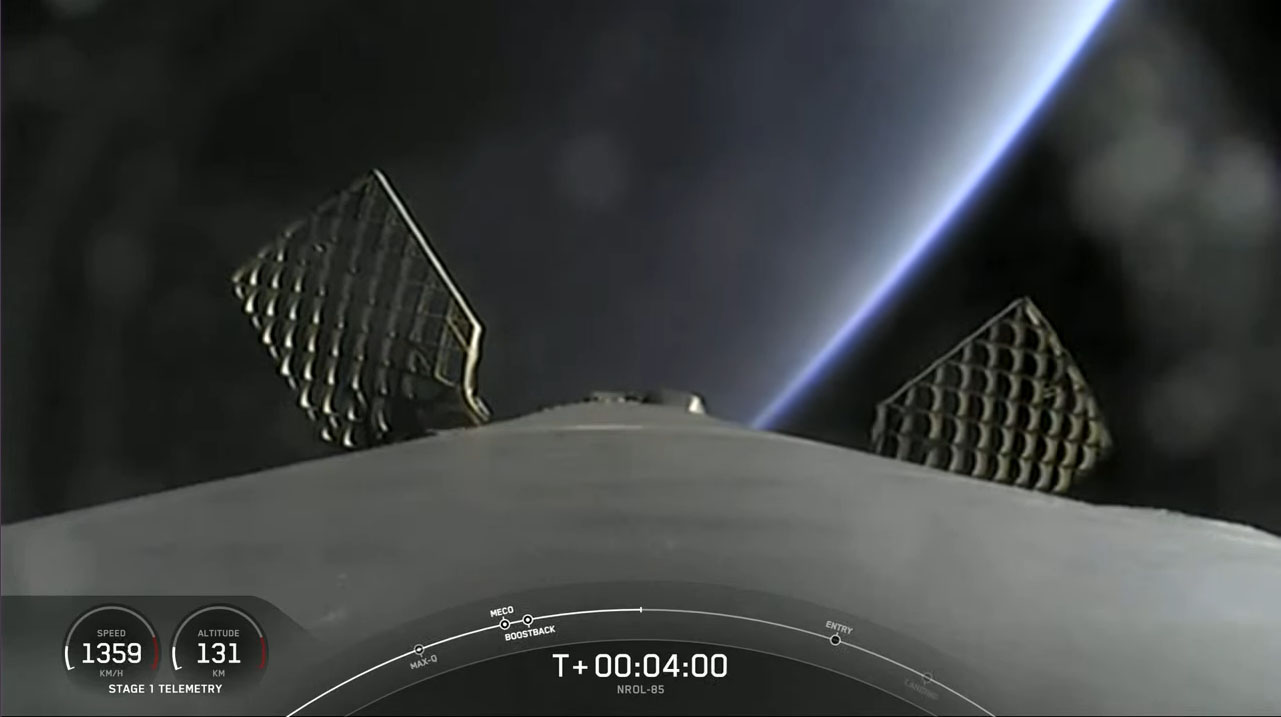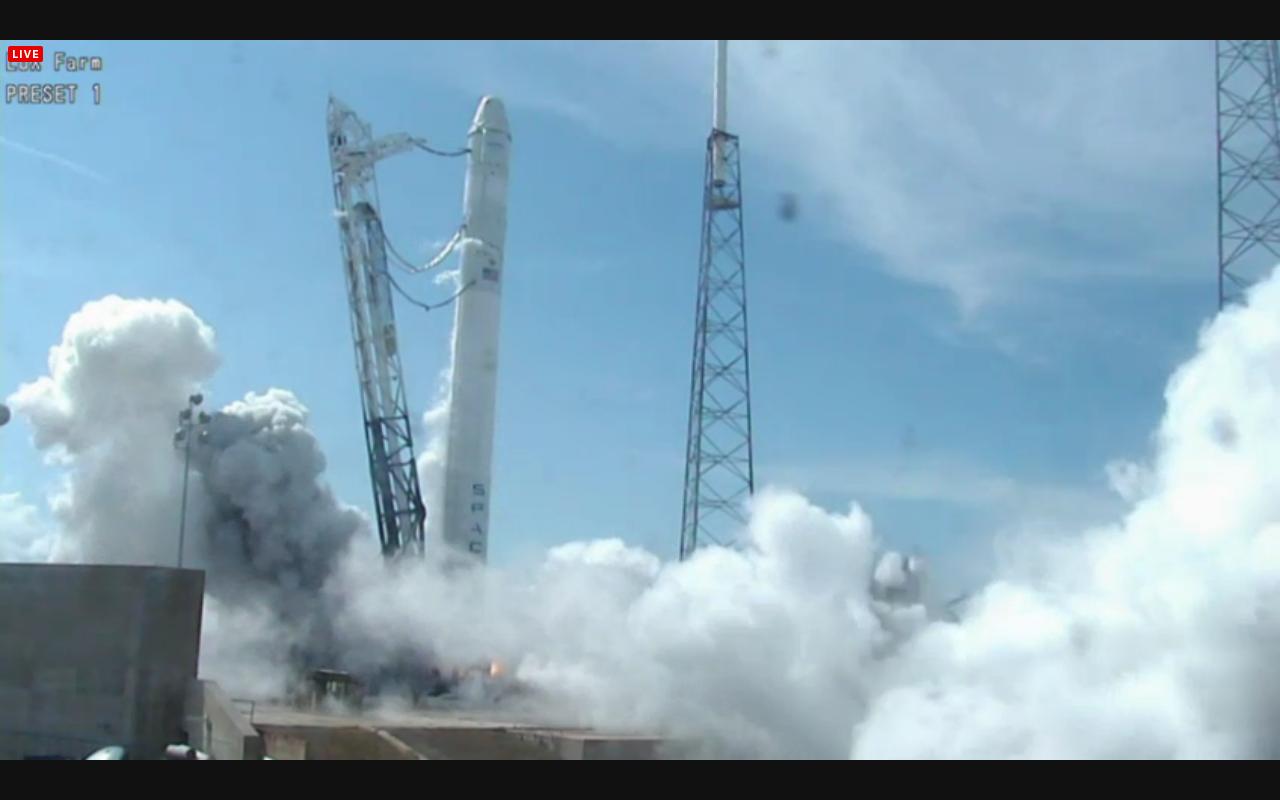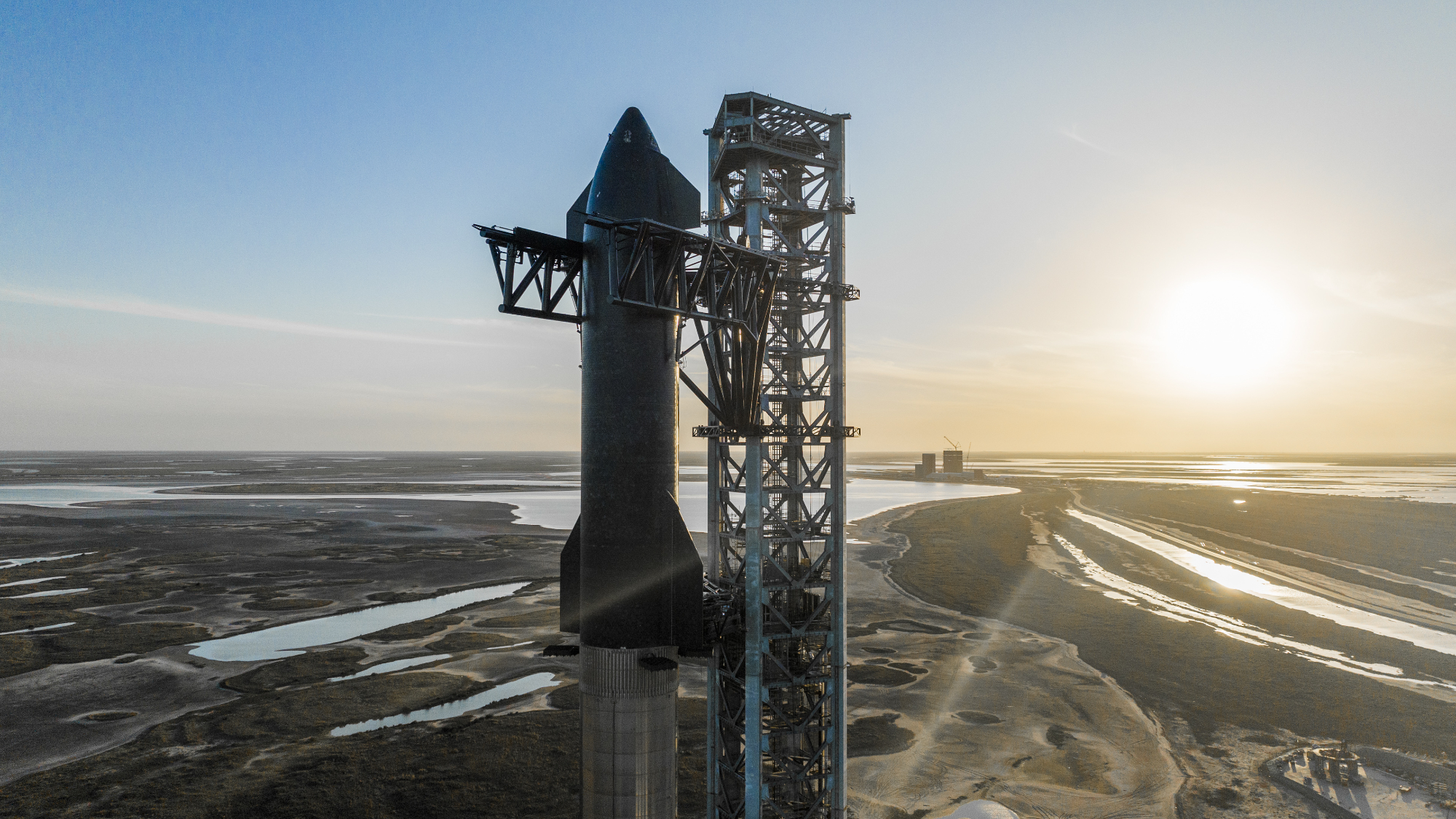Falcon 9: SpaceX's workhorse rocket
The Falcon 9 rocket launches satellites, cargo and astronauts into low Earth orbit.

The SpaceX Falcon 9 rocket is the vehicle that brings satellites, Dragon cargo spacecraft and Crew Dragon spacecraft to orbit.
Among its many uses, SpaceX regularly launches Falcon 9 to bring its Dragon spacecraft to the International Space Station. Dragon made the first private spacecraft visit ever there in October 2012 and has run more than 25 cargo missions in the years since. Since 2020, SpaceX also used Falcon 9 for crewed missions to the ISS, on behalf of NASA and other customers.
Falcon 9 is built as a reusable system, in line with SpaceX founder Elon Musk's desire to drive down the cost of spaceflight. The rocket's first stage comes down on land, or on a drone ship nearby the launch pad. It is the ride of choice for SpaceX's Starlink satellite system for broadband service and has been tasked for security missions on behalf of the National Reconnaissance Office.
Related: 8 ways that SpaceX has transformed spaceflight
Its Crew Dragon spacecraft runs missions to space on behalf of NASA, Axiom Space, the Polaris Program and other commercial companies or entities. These missions can go to the ISS or to low-Earth orbit. Also, elements of the Falcon 9 system are adapted for the much more powerful Falcon Heavy cargo rocket.
Falcon 9 specifications
— Height: 229.6 feet (70 meters)
— Diameter: 12 feet (3.7 m)
— Mass: 1,194,000 lbs. (541,300 kg)
— Payload to low Earth orbit (LEO): 28,991 lbs. (13,150 kg)
— Payload to geosynchronous transfer orbit (GTO): 10,692 lbs. (4,850 kg)
— First stage: Burn time: 162 seconds. Thrust at sea level: 1.53 million lbs. or 6,806 kilonewtons (kN) Thrust in vacuum: 1.6695 million lbs. (7,426 kN)
— Second stage: Burn time: 397 seconds. Thrust: 210,000 lbs. (934 kN)
The Falcon 9 is a two-stage rocket. The first stage has nine Merlin engines and aluminum-lithium alloy tanks containing liquid oxygen and rocket-grade kerosene (RP-1) propellant, according to SpaceX.
The second stage, using just a single Merlin engine, is a slightly shorter version of the first stage tank. It is connected to the Falcon 9 first stage via an "interstage", which is made of carbon-fiber aluminum-core composite.
Later versions of Falcon 9 include grid fins that come out of the first stage after separation, to guide the rocket to a soft landing. The legs emerge from the rocket a few moments before touchdown, either on a drone ship or a solid landing pad.

Funding the Falcon 9
SpaceX first trumpeted the Falcon 9's existence in a press release in 2005. Then priced at up to $35 million per flight (today it's $67 million), the rocket was developed in response to customer demand, the company said.
At the time, SpaceX was developing the lighter Falcon 1 rocket and planned to gradually increase capabilities with an "intermediate class" Falcon 5 launcher. Early listed customers of the rocket included companies such as Bigelow Aerospace, Avanti Communications and MDA.
According to SpaceX, it cost over $300 million to develop the vehicle. NASA was a huge player in providing funding during the company's early years. Notably, SpaceX received one of NASA's sought-after commercial orbital transportation services contracts (COTS), which was initially worth up to $278 million for SpaceX provided it met all its milestones. SpaceX continues to run cargo missions to the ISS under subsequent COTS contracts.
In 2014, SpaceX also was one of two funded companies (the other was Boeing) allocated money in the final stage of NASA's Commercial Crew Program. SpaceX received $2.6 billion under this development contract and successfully launched its first space station mission with people on board in 2020. NASA purchases more missions as required to fulfill space station staffing needs.
Another big win was receiving supplier status for the National Reconnaissance Office, which launches classified missions that require a high degree of secrecy and technical sufficiency. SpaceX also receives revenue from numerous customers who purchase payload space aboard the rocket, or who supply money to ferry crews to orbital destinations.
Falcon 9 development

Falcon 9's primary structure was finished in April 2007, and the first multiple engine firings took place in January 2008. SpaceX spent the year testing the engines, culminating in a "full mission-length firing" in November of that year. In an update to its followers, the California-based company touted the rocket's ability to compensate for failed engines in flight — a selling point to customers.
On Jan. 12, 2009, the Falcon 9 rocket rose to a vertical position at Cape Canaveral. It would be several months before the rocket soared into space, but SpaceX said the configuration was necessary to test all the systems in the next year.
SpaceX hoped to send the rocket up in 2009, but the actual launch date was June 7, 2010. The rocket passed all of the expected milestones but encountered an unexpected roll during launch. Falcon 9 then sent its first Dragon aloft on Dec. 8, 2010, returning it safely to Earth.
The early days of Dragon missions had some complications. For example, an engine problem forced an abort before Dragon soared to the ISS for a test flight in May 2012. An engine problem also marred Dragon's first official cargo run to the station five months later. Dragon arrived safely at its destination, but an Obrcomm satellite onboard fell out of orbit early, only five days after launch.
Falcon 9's most catastrophic moment came in June 2015, when the rocket exploded in mid-air while carrying a Dragon spacecraft that was supposed to resupply the International Space Station. The cause was traced to a faulty strut and flights were suspended for several months. SpaceX resumed flights safely in 2016 and has continued launching with few issues in the years since.
Related: Gallery: The Falcon and Dragons of SpaceX
Notable uses of Falcon 9
While Falcon 9 remains important for SpaceX ventures, there are other rockets in the fleet that are also supplying essential services for spaceflight.
The Falcon Heavy is a large cargo-lifting rocket based upon the Falcon 9 vehicle. It includes a stronger Falcon 9 first stage as its central core, and two Falcon 9 first stages serve as strap-on boosters.

Falcon 9 has completed many dozens of missions successfully, but we can pick out a few trends for the rocket's use that show the importance of its work to SpaceX.
The rocket is the booster of choice for SpaceX's Starlink fleet, which is a set of broadband satellites meant to deliver Internet service to remote areas. Starlink has several thousand members in orbit and SpaceX plans to grow the satellite fleet to tens of thousands of applications with the Federal Aviation Administration go to plan.
Falcon 9 also delivers both cargo and people to the International Space Station. It flies the Dragon cargo spacecraft for regular deliveries of experiments, supplies and hardware to the orbiting complex. Since 2020, it has also been sending Crew Dragon missions for NASA aloft. It began sending crewed missions on behalf of Houston-based Axiom Space in 2022, which performs research on the ISS.
It can also send people to other destinations in low-Earth orbit. In 2021, a Falcon 9 lifted the Crew Dragon carrying four individuals for Inspiration4, an all-private mission meant to raise money and awareness for St. Jude Children's Research Hospital in Memphis.
Inspiration4 was bankrolled by Shift4 billionaire Jared Isaacman, who commanded the mission. Isaacman plans to return to space several more times under the Polaris Program, which is a set of space missions he is paying for. Polaris Dawn, the first of the series, should launch in 2022.
Future SpaceX rocketry
Its first voyage on Feb. 6, 2018, flew a Tesla Roadster (Musk also founded Tesla), carrying a mannequin named "Starman," to space. Falcon Heavy has been used for a few heavy-lift cargo missions in the years since and has a perfect flight record.
Both Falcon 9 and Falcon Heavy are expected to be superseded by Starship, a spacecraft system under development by SpaceX. Starship has been selected by NASA as the system that will land Artemis astronauts on the moon, and Musk also wants to use Starship for eventual human Mars missions. Starship has flown several test flights and is awaiting environmental approval from the Federal Aviation Administration to conduct an orbital test, perhaps as soon as 2022.
Additional resources
Explore SpaceX’s website for more information on the Falcon 9 rocket including in-depth feature specifications. Stay up to date on SpaceX's launches on the company's Twitter feed. Watch SpaceX launches and landings on the company's YouTube channel.
Bibliography
Axiom Space. "SpaceX." 2022. https://www.axiomspace.com/home/spacex
Chapman III, Edwin C. "NRO Launch: A Pictorial History, 1996-2021." 2021, December. National Reconnaissance Office. https://www.nro.gov/Portals/65/documents/news/articles/2022/NRO_Launch_History_Picture-Book_1996-2021_web.pdf
NASA. "NASA Blogs: SpaceX." 2022. https://blogs.nasa.gov/spacex/
SpaceX. "Falcon 9." 2022. https://www.spacex.com/vehicles/falcon-9/
SpaceX. "Falcon User's Guide." 2021, September. https://www.spacex.com/media/falcon-users-guide-2021-09.pdf
Join our Space Forums to keep talking space on the latest missions, night sky and more! And if you have a news tip, correction or comment, let us know at: community@space.com.
Get the Space.com Newsletter
Breaking space news, the latest updates on rocket launches, skywatching events and more!

Elizabeth Howell (she/her), Ph.D., was a staff writer in the spaceflight channel between 2022 and 2024 specializing in Canadian space news. She was contributing writer for Space.com for 10 years from 2012 to 2024. Elizabeth's reporting includes multiple exclusives with the White House, leading world coverage about a lost-and-found space tomato on the International Space Station, witnessing five human spaceflight launches on two continents, flying parabolic, working inside a spacesuit, and participating in a simulated Mars mission. Her latest book, "Why Am I Taller?" (ECW Press, 2022) is co-written with astronaut Dave Williams.










